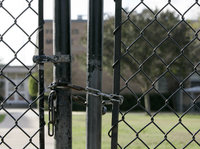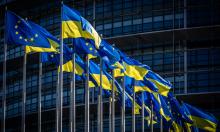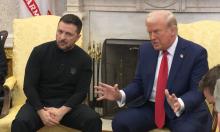Why American police incite riots
By Jamie Wendland

"Management Service: DR11" is an episode of popular nineteen-fifty and sixties American docudrama Dragnet, chronicling the aftermath of the assassination of civil rights leader Martin Luther King, Jr. Airing October 10, 1968, the episode centers on officers Joe Friday and Bill Gannon, as they are assigned with devising a police response to possible Los Angles protests.
Sergeant Friday decides it's wiser to limit police presence, but keep a riot force on standby, and concludes if the situation is treated like a riot from the start, that's exactly what they're going to get.
"Chief wants no excessive show of force, and don't act on rumors," he barks.
Dragnet, of course, is fictional, but as with most television programs, it reflects the values and thinking of a given era.
Prior to the University of Wisconsin's Men's basketball Final Four game, a Wisconsin State Journal headline announced; "Police preparing for another big post-game crowd on State Street." The article goes on to predict an even larger crowd than the "10,000-person party that erupted there last weekend."
How do Madison, Wisconsin police handle a pumped-up crowd of 10,000 college-aged, and probably alcohol fueled, revelers? Apparently, the chief has seen season 3-episode 4, as he "prepared" with only 50 officers in standard "soft gear" and kept the riot gear on standby.
Some 10,000 drunken, loud and rambunctious students crammed State Street. Several threw bottles or firecrackers, some climbed light posts while others stood atop bus stop shelters, shouting at the top of their lungs.
The State Journal mused the following morning, "A Madison police officer told one man, 'I'm not gonna put a Band-Aid on your head' when he saw him hanging from a tree."
There were no arrests and just a few citations issued to the overly rowdy, as police spokesperson Joel DeSpain happily reported. "We didn't have any serious issues and we're really proud of how our fans reacted."
Tucson, Arizona police, however, don't view the antics of college students the same as the fictional Joe Friday or Madison police. Following the very same game, the several hundred students taking to the streets were outnumbered by police in gas masks and full riot gear.
The Tucson police's own overreaction and show of excessive force when it really wasn't necessary created the very conditions in which a riot was the most likely outcome. In fact, they pre-planned and instigated a riot themselves, as verified by CBSSports.com:
"Police were prepared in riot gear, then forced to use pepper grenades when certain segments of the aggravated horde began verbally opposing the presence of law enforcement."
The students were completely justified in opposing such a heavy handed police presence, because it wasn't necessary to begin with. This wasn't a riot; there were no rumors or any indication that a riot was even going to take place. These were neither protesters nor radicals; rather this was a group of forlorn students lamenting their team's loss.
The police had instigated the very riot they were there to avert, by their own unwarranted excessive force.
Anyone with any contact with Minnesota has probably experienced that when it comes to constitutional rights and liberties, it's hardly the land of the free. Police State Minnesota abounds with unconstitutional DUI checkpoints, unwarranted searches and police brutality. Minnesota also seemingly has a zero tolerance for any form of public assembly.
Following the first Minnesota Gophers Frozen Four hockey playoff game, fans poured into the streets in traditional college fashion. Of course they're going to be noisy, to be rowdy and boisterous. To the law of Minnesota, this is unacceptable.
No sooner did the game end, than students were greeted by over a hundred riot police with blaring bullhorns, warning the crowd of an "unlawful assembly" even before it had the opportunity to assemble. A local ABC affiliate described the scene as "chaos," reporting;
"Hundreds of people flooded the streets of Dinkytown near the University campus Thursday night, forcing officers from across the Twin Cities to break up the crowd."
Riot gear and AR-15s rarely set a festive mood, but Minneapolis police had pre-determined a riot.
"People were seen throwing bottles, climbing light poles," it was reported, "-and even lighting fireworks in the streets!"
In other words, they were doing almost exactly the same things that Madison students, and other college students, have done for decades. However, in this case, it was immediately escalated by police with bean bag bullets and pepper spray.
"Minneapolis Police are investigating the massive celebration of students that turned criminal."
Already having successfully escalated a simple celebration into a riot with over nineteen arrests, by treating it like a riot from the start, Minneapolis police were now able to justify an even greater show of force for the second playoff game.
Days before the game was to take place any possible public assembly or celebration was discouraged with stern threats;
"Remember, if things escalate, police don't distinguish between bystanders and participants," Pamela Wheellock, Vice President of University Services warned during a KSTP report.
Never mind that random targeting of everyone within site, regardless of involvement, is not considered good police work by any stretch of the imagination. Rather, ask yourself: how do the police know "things" may escalate unless they're already planning on escalating them? After all, this isn't a protest, a Tea Party or KKK gathering, this is a bunch of college students who may or may not celebrate a team victory.
The several hundred students ultimately preparing for Dinkytown streets in lament of their loss of the game were in for a rude awakening. Greeted in war-zone fashion with over 300 riot police, armored vehicles and armed helicopters circling overhead, one would think this was an attempted government coup by armed militants, not a traditional custom of college students.
Madison police easily managed a mob of 10,000 with a mere fifty officers in standard soft gear. Are Minnesota students so very different that they require what practically surmounts to a military battalion in full gear to keep several hundred in line, before they've even had an opportunity to fully assemble?
Wisconsin is the exception and not the rule, as the national trend is that public assembly in any form is met with overwhelming police force, whether they require it or not.
Traditional college student public gatherings in Albuquerque, New Mexico, Tucson, Arizona and even the sleepy southern city of Lexington, Kentucky, following the NCAA Tournament have all been the recent targets of police incited riots.
We're living in an era where government thinks nothing of trampling on constitutional rights or personal liberties. Furthermore, even as the economy grows, the wealth goes to mighty, while mom and pop America gets food share. The gender wage gap, the racial wage gap and the age wage gap are amplified now as we all must fight even harder for just a little larger piece of the meager pie we share.
Soon, every sliver of that pie will be gone or distributed, and we'll stop bickering amongst ourselves and attack the real enemy. If Americans were to take to the streets, it will be a revolution of epic proportions. Therefore the will to resist must be so broken, and Americans so terrorized by authority, that college kids are conditioned to accept that public assembly in any form will be met with overwhelming and violent force.
But, there are exceptions.
Rancher Cliven Bundy may not be a good guy, and may be completely illegally grazing his cattle on Nevada public land. That aside, instead of just arresting the elderly man for possible illegal activities, the government floods the region with thousands of heavily armed federal agents.
For days, they terrorize locals and protestors through tazing, beatings and arrests for the eerily Orwellian charge of "failing to disperse." CBS and other networks reported that officials had stooped so low as to sic attack dogs on a pregnant woman. The Feds, it seems, were hell-bent on escalating a relatively minor grazing issue, more suited to civil court, into a riot situation.
That is, until well-armed members of the Texas State Militia arrived, brandishing armor piercing ammunition. No sooner are federal agents faced with heavily armed resistance, than they immediately cite "public safety concerns" and stand down.
Contrast this with the well documented and reported brutality against the unarmed Occupy protesters, which resulted in over 2,500 arrests.
The Bundy case is indicative of the reality that the disparity in arrests and abuse between Occupy and Tea Party protests has nothing to do with political bias. Although this is not an endorsement of militias or gun violence, the facts are painfully clear---police don't mess with assemblies of citizens who are armed to the teeth.
On March 2, 2014 in Washington, D.C., the peaceful protest of only 1,200 participants against the Keystone oil pipeline project resulted in pepper spraying, police assaults and nearly four hundred arrests. A whopping 40% arrest rate, for what should be a basic constitutionally protected right of public protest. How many arrests would have occurred with a hundred or so armed citizen militiamen lurking in the shadows?
Police around the nation are cracking down on even the most peaceful of public assemblies and escalating situations. Peaceful protests, traditional college student public antics and even wedding reception parties have been sequestered or dispersed by overwhelming police show of force.
Is this what America has become? Do even college students or environmental activists need to call upon the armed protection of the Texas State Militia in order to exercise their constitutional right of assembly, or prevent police abuse?
"Excessive show of force and acting on rumors" is standard police procedure in America today, as the public will to resist must be shattered.
It's a vicious cycle played out every day in the US: police escalate a minor situation into a riot, then as a result demand more riot gear and more military style equipment for the next situation. The next assembly is met with even more immediate force, and it escalates even further. Eventually the public is so filled with fear that even the thought of any public assembly, let alone public protest, is far removed from their minds.
Jamie Wendland
Subscribe to Pravda.Ru Telegram channel, Facebook, RSS!





